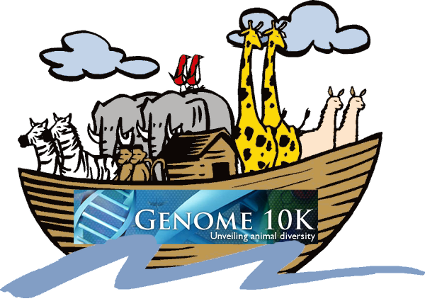In a proposal reminiscent of Noah’s Ark, scientists plan to collect DNA sequences for 10,000 vertebrate species, approximately one for every vertebrate genus. The Genome 10K Project, or “genome zoo”, will be analyzed to reveal evolutionary changes that took place, leading to the species here today.

Sixty-eight scientists, called the Genome 10K Community of Scientists (G10KCOS), will gather specimens of thousands of animals from zoos, museums, and other collections worldwide. Once collected, they will begin sequencing the genome of each.
David Haussler, professor of biomolecular engineering at UC Santa Cruz and one of the lead project scientists, said,
For the first time, we have a chance to really see evolution in action, caught in the act of changing whole genomes. This is possible because the technology to sequence DNA is thousands of times more powerful now than it was just a decade ago, and is poised to get even more powerful very soon. Differences in the DNA that makes up the genomes of the animals we find today hold the key to the great biological events of the past, such as the development of the four-chambered heart and the magnificent architecture of wings, fins and arms, each adapted to its special purpose.
This “Noah’s Ark of DNA” can lead to discoveries not only of how evolution occured in our past, but can help scientists predict how species will respond to future events such as climate change, disease, and pollution.
For more into this research, as well as how you can be involved as an active participant, check out the Genome 10K Project site.
